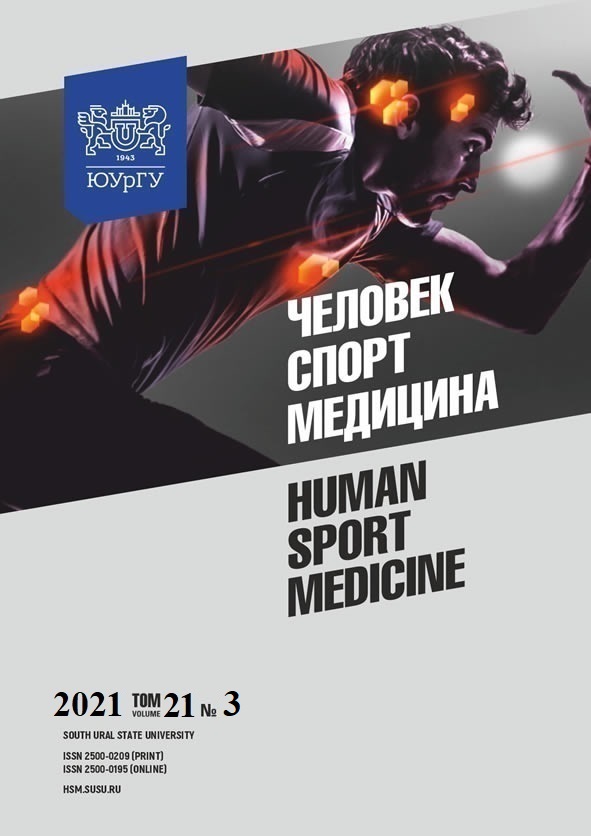FEATURES OF PHYSICAL DEVELOPMENT IN GIRLS AND TEENAGERS IN RHYTHMIC GYMNASTICS
Abstract
Aim. The paper provides a comparative assessment of physical development between female gymnasts and the control group, determines the difference between the indicators depending on the group, and reveals the features of body composition among female gymnasts, as well as the variety of their somatotypes depending on the age groups. Materials and methods. Girls and teenagers engaged in rhythmic gymnastics (n = 102, 6–17 years old) participated in the study. The control group included girls and teenagers who did not have intense physical activity (n = 340, 7–17 years old). The main morphological parameters, body composition and somatotype profile were studied. Results. Differences between the groups were found in terms of morphological, body composition and somatotype-related parameters. Female gymnasts were characterized by smaller body dimensions compared to the control group. In certain age groups (first childhood, second childhood, teenagers), body length, body weight and body mass index (BMI) of female gymnasts were significantly lower than in the control group. In all age groups, waist and hip circumference of female gymnasts was lower than in the control group. In all age groups, female gymnasts had lower body fat compared to the control group. In certain female gymnasts (second childhood and teenagers), the relative skeletal muscle mass and specific basal metabolic rate were higher compared to the control group and indicated a well-developed muscular component. Female gymnasts differed from the control group in terms of their somatotypes and had significantly higher indicators of the ECTO component and significantly lower indicators of the ENDO component. Conclusion. Girls and teenagers engaged in rhythmic gymnastics were characterized by smaller body dimensions. Female gymnasts had lower body fat in all age groups and higher indicators of the relative skeletal muscle mass in the 2nd childhood and teenage period compared to the control group. The somatotype changes from ectomesomorphic (with a predominance of the muscular component) to mesoectomorphic (with a predominance of the bone component) with age and level of sports achievements.
References
References on translit
Copyright (c) 2021 Human. Sport. Medicine

This work is licensed under a Creative Commons Attribution-NonCommercial-NoDerivatives 4.0 International License.















